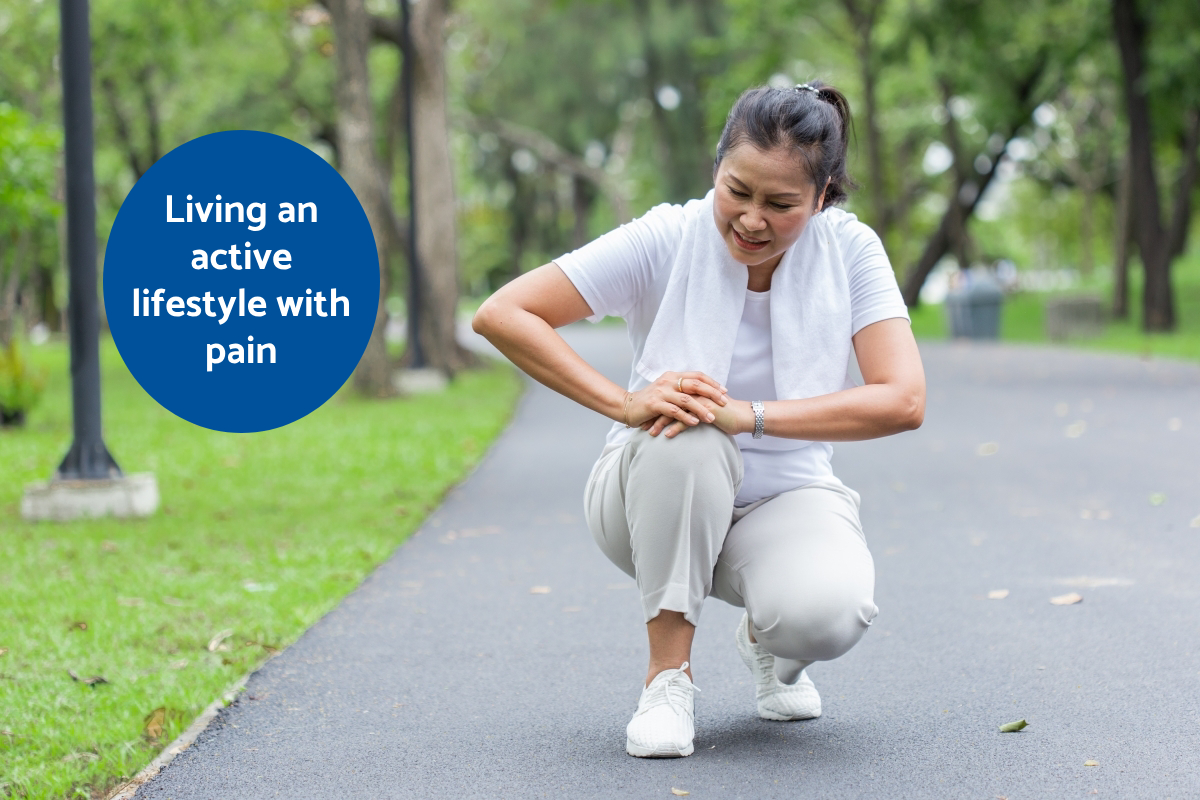
Ouch! Oh my! Pain and discomfort are very real barriers to moving and engaging in activities that bring us joy and good health. We know that physical exercise and engaging in life have significant benefits, such as improving physical strength, emotional well-being, and many others. However, for some of us, as we age our bodies change and we experience pain. Pain alerts us that these changes may have serious consequences so a qualified healthcare provider should always check for any consistent pain (chronic) or sudden pain (acute).
Symptoms of pain vary and can depend on what causes the pain. The intensity can also depend on how our body tolerates pain or if we are taking other medications that may mask the pain. Also, some of us have a higher threshold for pain than others. General symptoms and side effects of pain include:
-
Stiffness or achy feelings in a specific area or all over
-
Pain localized or general that gets worse with movement
-
Muscles that twitch or spasm
-
Fatigue
-
Trouble sleeping
-
Burning sensation in muscle, bone, or joint
-
Warm joints or at a specific point on a muscle
-
Guarding or protecting an area due to a history of pain
The most common kind of chronic pain comes from our joints, muscles, or bones. Joints form the connection between bones. They provide support and help us move. Damage to the joints can come from diseases or conditions, injuries (sprains), or changes caused by wearing down the bone or cartilage (cushion between bones). Some of the common joint conditions causing pain are osteoarthritis, gout, bursitis, and rheumatoid arthritis. Joint pain is quite common, affecting most adults at some time during their life. Muscle pain can come from muscle tears (strain) or the lack of blood flow to the muscle causing the muscle to shrink (atrophy) and become weak and painful. Muscular and joint pain can also be caused by poor posture, prolonged immobilization, or lack of movement. Bone pain is deep. It can come from a bruised bone, a fracture, or a tumor.
Joint, muscle, or bone conditions can cause pain when we move and that pain can worsen if we do not move. So, what should we do? Once a healthcare provider has diagnosed the cause of pain and approves us for activity, it is time to work toward a better quality of life. Here are a few actions to take:
-
Move. Immobility leads to stiff joints, weak muscles, and fluid build-up in joints. If there is access to a pool, water exercises assist pain-free movement and build strength and flexibility. A warm bath can also create a reduction in pain and help develop stronger muscles and flexible joints. Movement increases circulation to muscles and joints and can reduce fluid in joints caused by arthritis. Check for help or suggestions from Physical or Occupational Therapists, Personal Trainers, or Wellness Directors. Activities such as walking, swimming, bicycling, and gardening are excellent activities.
-
Stretch. Another method to increase flexibility, reduce joint stiffness and pain, and move fluid away from joints.
-
Massage. If there is access to therapeutic massage, take advantage of it! We must always be sure to educate the masseur about our medical condition so they do not inflict any additional harm.
-
Lift, push, or pull. Strength training should be performed at least twice a week for most adults. Lifting, pushing, and pulling increases strength, improves joint flexibility, and reduces joint fluid.
-
Personal care. Although incontinence or occasional bladder leakage is not commonly associated with pain, moving and exercising may cause this to happen to us. The emotional pain or potential embarrassment is unnecessary if we plan to use bladder control products when exercising. Additional resources can be found here: https://www.personalcareresources.com/infopro-patient-information/
We may not achieve a pain-free life, but we can be active again and re-engage to experience joy. So let’s transcend beyond our pain and strive to be as healthy and engaged in our life as we can be.
Reference: Forte, A. Musculoskeletal Pain. Merck Manual Consumer Version; February 2021. https://www.merckmanuals.com/home/bone,-joint,-and-muscle-disorders/symptoms-of-musculoskeletal-disorders/musculoskeletal-pain
